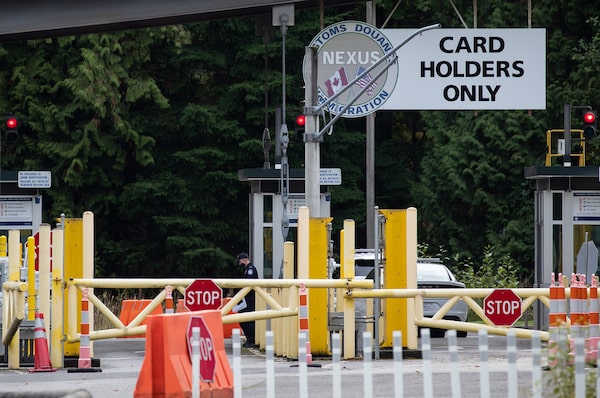
The Liberal government remains committed to setting immigration records every year, with 411,000 new arrivals slated for 2022 and 421,000 in 2023.DARRYL DYCK/The Canadian Press
With a little more than two months to go, Canada is comfortably on track to meet its goal of welcoming 401,000 new permanent residents this year, despite closed borders and other pandemic restrictions.
That Canada is on the cusp of achieving such a goal in such times is remarkable. Even more remarkable is that no one seems to consider this a big deal.
“We’re in the home stretch,” Immigration Minister Marco Mendicino told me. “Our goal of landing 401,000 new permanent residents in 2021 is well within sight.”
And the Liberal government remains committed to setting immigration records every year, with 411,000 new arrivals slated for 2022 and 421,000 in 2023. Canada is now taking in well in excess of 1 per cent of its population of 38.5 million annually.
The Immigration department has been meeting these targets by converting temporary workers, graduated international students and asylum claimants already in Canada to permanent residents. Those measures, however, are winding down. Visa offices are open once again around the world and fully vaccinated travellers are allowed to enter Canada.
The COVID-19 pandemic revealed hard truths. One is that some of Canada’s most essential workers aren’t in high tech or trades; they’re supermarket workers and truck drivers and others who keep the wheels turning. Immigration policy must recognize their importance.
Another is that immigration will account even more for labour-force growth after the pandemic than it has in the past. Canada’s total fertility rate in 2016 was 1.6, short of the 2.1 children per woman needed to keep a population stable. Today it’s down to 1.4.
Don Kerr, a specialist of demography at King’s College at the University of Western Ontario, shared with me data on fertility rates by census metropolitan area, based on Statistics Canada’s 2020 birth data. Many major cities have fertility rates below the national average.
Vancouver’s fertility is 1.09, comparable to the ultra-low fertility rates of Pacific countries such as Japan and South Korea, while Victoria has fallen to a remarkable low of 0.95. Edmonton (1.41), Calgary (1.33) and Montreal (1.41) are at or close to the national average, but Toronto is only at 1.21, and Halifax is at 1.1.
“Canadian women are delaying their first birth further and further, having fewer children and opting for childlessness to a greater extent than ever before,” Prof. Kerr observed. Thirty-two out of 33 census metropolitan areas saw a decline in fertility over the past decade, even prior to the pandemic.
“Canada’s natural increase is at an unprecedented low,” said Prof. Kerr. “If the smaller cohorts to follow the millennials continue with this very low fertility, we can expect even fewer births.”
If so, then immigration is the only route to filling labour shortages and sustaining the economy. The good news is that new polling data provided to The Globe and Mail by the Environics Institute and Century Initiative show that attitudes toward immigration remain positive and stable.
Sixty-five per cent of those polled disagreed with the statement: “Immigration levels are too high.” Only 29 per cent agreed. Flipped around, 57 per cent agreed that “Canada needs more immigrants to increase its population” (37 per cent disagreed) and 80 per cent agreed/16 per cent disagreed that “the economic impact of immigration is positive.”
(The survey was based on landline and cellphone interviews with 2,000 Canadians from Sept. 7-23, and has a posted margin of error of 2.2 percentage points, 19 times out of 20.)
In the recent federal election, every major national party supported an open immigration policy. Maxime Bernier’s People’s Party, which would ratchet the numbers down, received 5 per cent of the vote, but even that modest level of support was probably based mainly on the party’s opposition to vaccine mandates.
Far from opposing immigration, provinces such as Ontario are asking Ottawa to increase the numbers they can bring in under the provincial nominee program.
Mr. Mendicino may or may not remain as Immigration Minister after a new cabinet is sworn in Oct. 26. His and other departments struggled to extricate Canadians and those who had served Canada when the Taliban swept to power in Afghanistan in August.
But overall the country’s immigration performance on this minister’s watch has been impressive. And Canadians should congratulate themselves on remaining an open and welcoming society, even as so many others have closed their doors.
Our Morning Update and Evening Update newsletters are written by Globe editors, giving you a concise summary of the day’s most important headlines. Sign up today.
 John Ibbitson
John Ibbitson